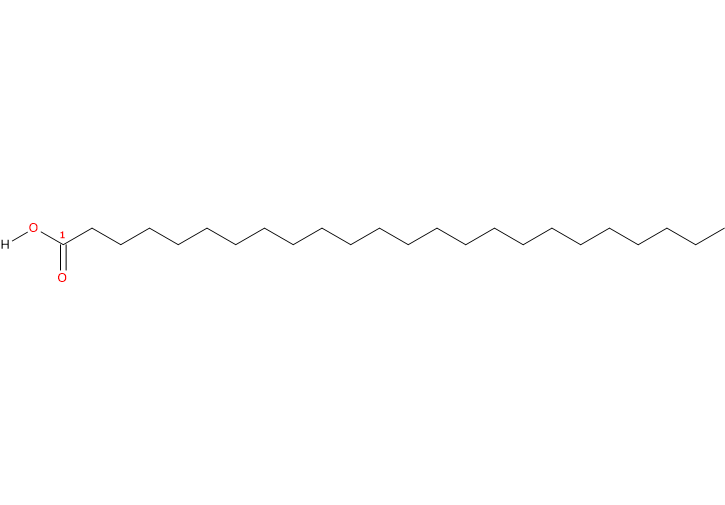Lignoceric acid (24 carbon atoms) owes its name to the fact that it was found in beech wood tar (in 1888 by Hell and Hermanns). It belongs to the group of saturated fatty acids (no double bond, so its shorthand notation is 24:0). It is also a member of the group called very long chain fatty acids (VLCFA), from 20 carbon atoms onwards.
PROPERTIES
Molecular weight: 368.63672 g/mol
Molecular formula: C24H48O2
IUPAC name: tetracosanoic acid
CAS registry number: 557-59-5
PubChem: 11197

In purified form it is crystalline fatty acid with melting point at 87.5-88 °C (189.5-190.4 °F) and boiling point at 272 °C (521.6 °F; 545.15 K) at 10 mmHg.
OTHER NAMES
tetracosoic acid
N-tetracosanoic acid
24:0
Sources of lignoceric acid
It occurs as glycerol ester as a minor constituent of many plant fats; it is found especially in wood tar, as from beech wood, rotten oak wood, but also in peanuts oil.
In animals, it is present in sphingomyelin.
References
- Akoh C.C. and Min D.B. “Food lipids: chemistry, nutrition, and biotechnology” 3th ed. 2008
- Chow Ching K. “Fatty acids in foods and their health implication” 3th ed. 2008
- Taylor F.A. The tetracosanic acid of peanut oil. J Biol Chem 1931;61-2:541-50. doi:10.1016/S0021-9258(18)76565-4